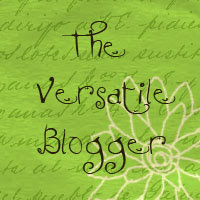This engrossing story provides insights into what it’s like to be Catholic, how problems in the Church affect belief, and how the Church lost, but can reclaim, its original message.
The book’s five easy-to-read sections offer a compelling and often humorous account of the author’s early faith as it flourished in a devoutly religious family. Interwoven with that story is a concise review of the sacraments and other Church accoutrements.
A compassionate yet honest look shows how, for many, faith dissolved into frustration at the dichotomy between Church doctrine and its real mission.
The author’s engaging analysis of how words create reality in religion is full of delightful surprises, and her brief tracing of Church history demonstrates that problems arose because the Catholic Church is an absolute monarchy accountable to no one, and is modeled after Middle Eastern cultures that treat women as inferior.
Finally, the book eloquently describes where this leaves the author and others who once loved their Church so dearly. It offers possibilities for Catholicism in the 21st century and encourages everyone to discover the true meaning of faith.
A thought-provoking tale that is ultimately satisfying, this book will give all readers comfort and hope.
The Story Behind Faith Stories of One Good Catholic Girl
by Diana Milesko
The inspiration for my book, Faith Stories of One Good Catholic Girl, germinated over decades. My childhood faith evolved from stories about my family and ancestors, my culture, and the Church in which I was raised. I accepted the Catholic Church because I was young, had no other reference point for religion, and Catholicism was closely tied with my everyday life, (my father was a Church organist and my mother taught in a Catholic grammar school). In addition, the Good Sisters in Catholic School reinforced our central impulse--to be ethical people who looked out for each other.
A significant moment that changed my view of Catholicism occurred in grammar school, when I learned that girls were not allowed to be priests. Priests were highly valued by the Church and God. While I didn’t especially want to be a priest, I DID want to be highly valued by the Church and God. If girls could not become priests, that meant girls were second-rate in God’s, eyes. I could never believe God thought I was second-rate.
As I matured I found much Catholic dogma to be bizarre. For instance, we were taught there was Heaven, Hell and Purgatory. Then Purgatory was eliminated. With Purgatory gone, what happened to all the unbaptized babies I prayed for that went there?
Catholics were taught to not ask questions, so for a long time, few challenged the dichotomy between Church mission--justice, care for the suffering and marginalized, inclusion of everyone in God’s love--and Church dogma.
Rather than tackle a powerful, centuries-old institution, I and other Catholics who could no longer endure the contradictions and irrelevancies, left the Church. But, like a yoyo, I’d come flying back--for the message of a loving God through community was truly worthwhile--then leave again when the Catholic hierarchy instituted another daft rule, like changing the Mass language to that of a Master-Slave relationship.
Eventually, thanks to a few lucky incidents, I was able to stop walking away, take a clear-eyed look at the good and the bad in the Church, and find the true meaning of faith.
I wrote this book for two reasons. First, writing clarifies one’s thinking. I believed writing about the Church would help me better understand what my faith was all about. Second, other Catholics also felt their religion was buried under a massive sludge of problems. I wanted to offer thoughts on how problems in the Church might be approached, and where my own spirituality is taking me.
My primary concern in writing this book was that it be accurate, but not shrill. I tried to make it an honest, personal, and sometimes amusing account of my own experience as a lifelong Catholic (for much Catholic dogma can only be described as amusing). I also wanted to share what I discovered about the history and influence of the Catholic Church. My investigation included reading, research, as well as conversations with clergy, practicing Catholics, former Catholics, and others.
Purchase at:
http://dianamilesko.com/
Virtualbookworm.com
Amazon
Barnes and Noble
You can order it at from most bookstores around the United States and United Kingdom. More information can be found at the author’s website.
Diana Milesko is a professional speaker and writer who has taught humanities, media and English at high school through university levels in Illinois, Connecticut and Florida. Her other careers include that of counselor, speech writer and publisher.
She earned her bachelor's degree at the University of Illinois, her master's at Loyola University Chicago and her doctorate at Global Ministries University.
Milesko has been a Catholic throughout her life, serving as cantor, communion minister, and choir member in several states. In an earlier life she played the organ and sang for Masses and weddings. Her passion for music is lifelong. She plays the piano and at one time sang in a female barbershop chorus. As a young adult she played guitar and harmonica at schools and clubs.
Her engaging talks at churches, universities, clubs and libraries illuminate contemporary issues such as ethics, health, and the environment. Topics include: What's Eating America? (about today's food industry), How to Live Well and Long, and Planet Pollution. She has participated in discussion groups such as the University of Chicago's Roundtable on Teaching the Adult Learner.
Visit her online at dianamilesko.com.

























No comments:
Post a Comment